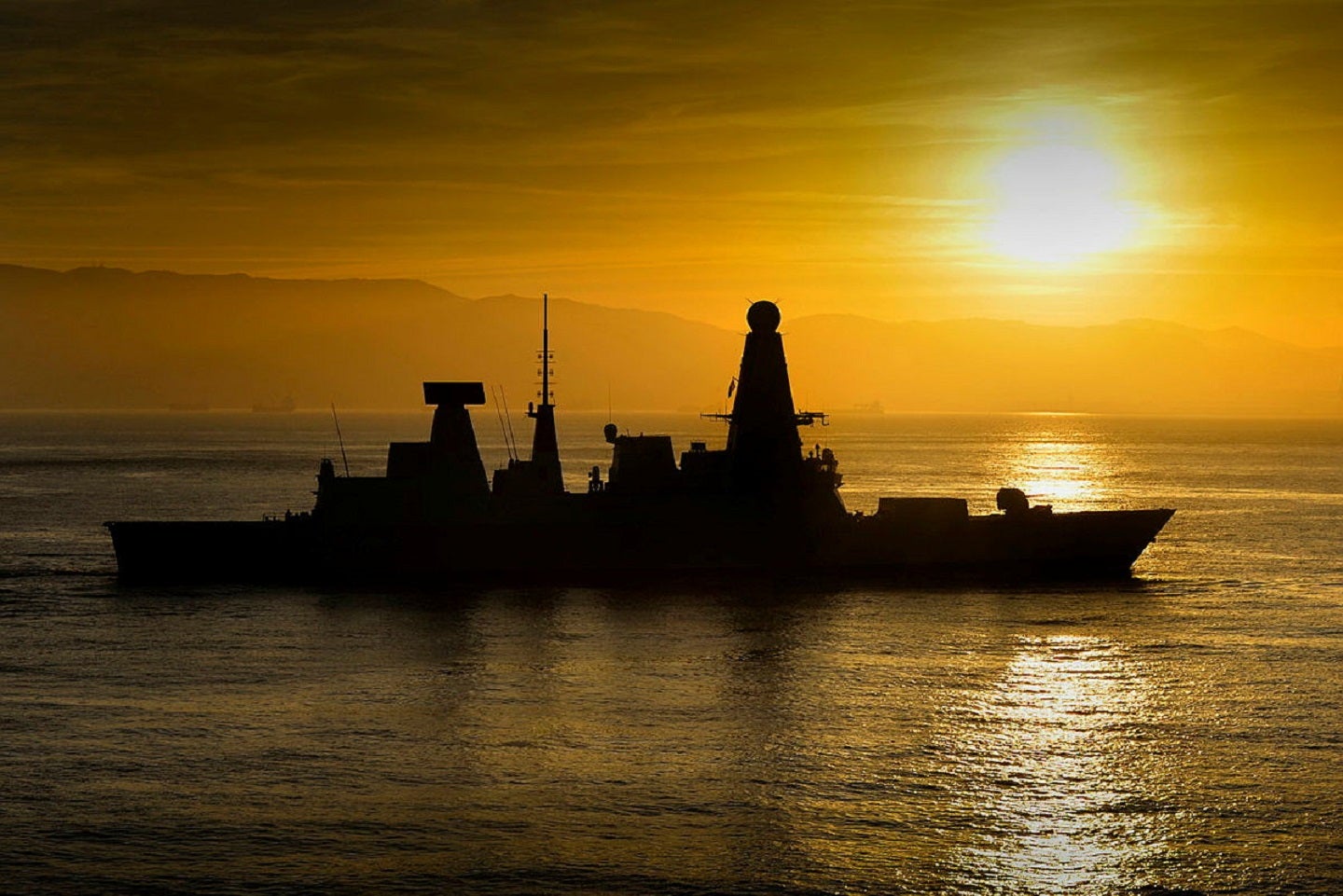
The UK Type 45 destroyer (DDG), HMS Dauntless, has been cleared for global operations by the Royal Navy. The go-ahead follows nine months of regeneration that included trials last summer, engine and power upgrades and additional training tests around the south coast of England.
The restoration programme, known as the Power Improvement Project (PIP), addressed the resilience of the DDG’s engines as well as the power generation that drives her advanced sensor suite, weapons and systems. The two original diesel engines were removed and replaced with three more reliable, powerful and cleaner generators.
The Royal Navy claim that the PIP not only gives Dauntless a boost but “could also power the technologies of tomorrow, such as energy weapons already under development for the Royal Navy in UK labs.”
The subsequent training put the the Portsmouth-based warship to the test with demanding trials, tests and finally a gruelling assessment of her crew and all weapons and systems generators.
The Commanding Officer of HMS Dauntless, Ben Power,said: “[T]o be able to take a ship with a new and unproven propulsion plant and turn it in to a credible air defence destroyer ready for global operations in a period of just nine months is an enormous achievement.”
Training tests
The recent training tested her weapon systems, which fired during training began with general purpose and heavy machine guns, through to the 30mm cannons, ramping up to the main 4.5 inch main gun and Phalanx radar-controlled gun, which is capable of spitting out four-and-a-half thousand rounds per minute at incoming aircraft, missiles or fast-attack boats.
How well do you really know your competitors?
Access the most comprehensive Company Profiles on the market, powered by GlobalData. Save hours of research. Gain competitive edge.

Thank you!
Your download email will arrive shortly
Not ready to buy yet? Download a free sample
We are confident about the unique quality of our Company Profiles. However, we want you to make the most beneficial decision for your business, so we offer a free sample that you can download by submitting the below form
By GlobalDataTesting also included tracking targets with a very low radar cross section, designed to replicate a small incoming missile – a crucial part of the air defence destroyer’s capability.
The training increased in complexity throughout, with other vessels and helicopters added to equation as the ship defeated threats simulated by aircraft and boats in a range of environments, including in the air, on the surface and even underwater.
The centrepiece of the training was the disaster relief exercise, deploying sailors ashore to a village and providing the humanitarian aid needed following a natural disaster, including providing fresh food and water, extinguishing fires and repairing critical infrastructure such as communications networks, electricity supply and water supply.
“Powering the technologies of tomorrow”
The Royal Navy suggest that the PIP upgrades could “power the technologies of tomorrow, such as energy weapons already under development for the Royal Navy in UK labs.”
The UK’s Integrated Review Refresh 2023 suggests that the country is committed “to spending £20bn a year by 2024/25 on research and development” alongside the country’s effort to “reorganising government to enable greater focus and dynamism” in emerging technologies.
GlobalData tells us that directed energy weapons is attracting increasing attention, just as the Royal Navy suggest. In the company’s report on Directed Energy Weapons (2022), it asserts “it is only in recent years that militaries such as China, Israel, Russia, the UK, and the US have finally been capable of fielding those technologies through integration with existing platforms or capabilities.”
In the naval domain, the development of directed energy weapons (DEWs) is focused heavily on their potential as counter-uncrewed aerial systems and counter-rocket, artillery and mortar, as well as air defence systems.
Due to the logistical complexity of resupplying surface warfare vessels with munitions during extended deployments, the use of DEWs would address a key challenge by providing vessels with high precision, low-cost air defence systems capable of utilizing a significant energy supply as a near-infinite magazine to protect the vessels from hostile threats.
This is quickly becoming a necessity as the US and its allies are becoming increasingly present in the Indo-Pacific region, where the sustainable use of naval capabilities is a prized asset for such a vast expanse.
There is a lot to suggest that navies need to meet the challenging demands of the Indo-Pacific. America’s strategic ally, Australia, has contracted the US-firm, Lockheed Martin, to deliver a sateillite communictaions system that will provide constant situational awareness across the Indo-Pacific. Additionally, Europe is considering organising a naval presence in the Taiwan strait.
Meanwhile, the private sector are keen to deliver on these naval requirements; the Sikorsky company has even custom-built its Raider X rotorcraft to meet the distance demands posed by the Indo-Pacific.






